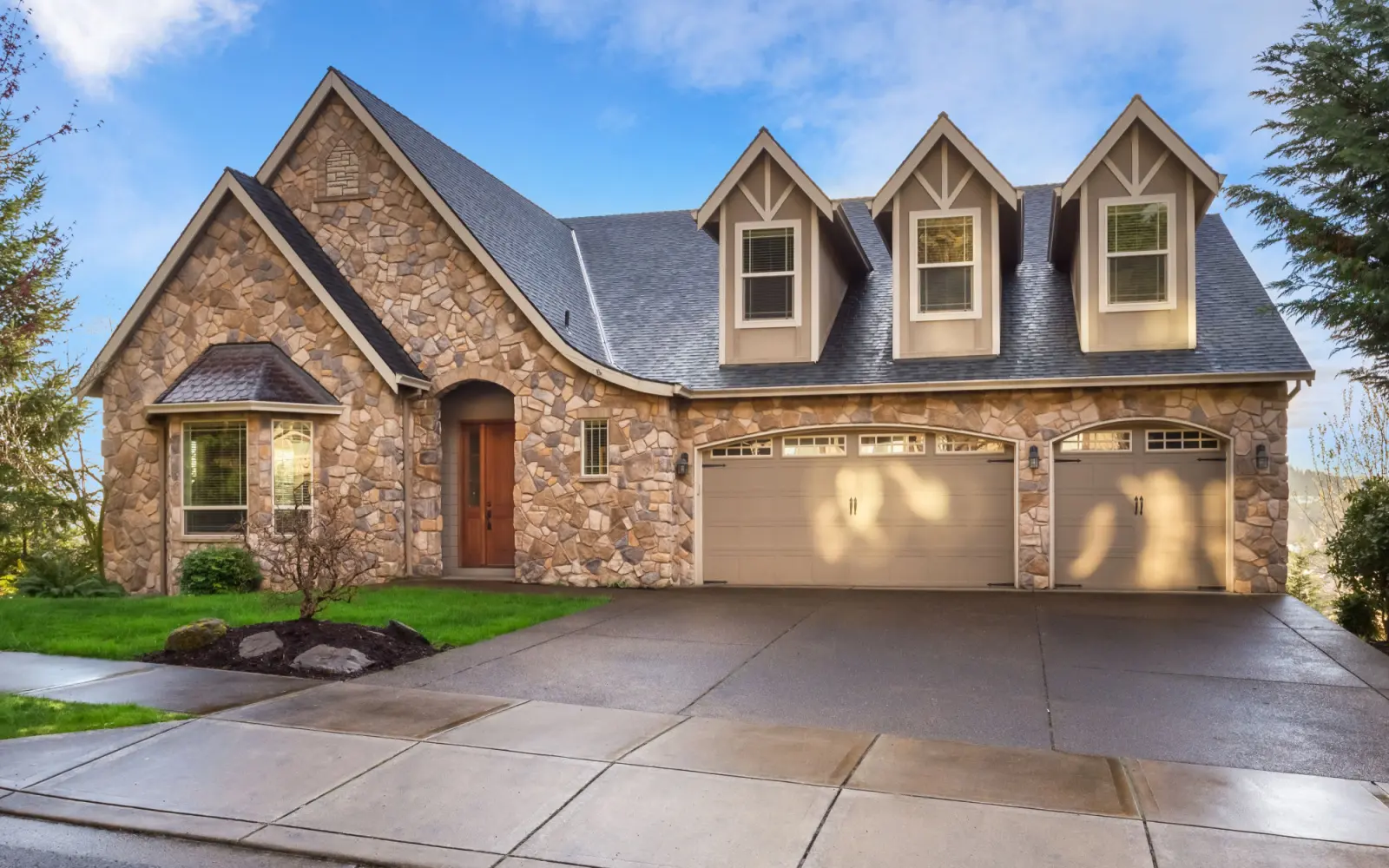Are you looking to give your home a facelift?
There are several types of exterior house stones to explore, ranging in price, durability, and aesthetic.
Whether you’re in the design phase of a new build or contemplating an exterior remodel, you certainly won’t be disappointed in the array of options available to you!
Most Common Types of Exterior House Stone
Most houses with exterior stone have one of the ten most frequently used options listed below.
There are tons of textures and colors to choose from, so you’re sure to find one you love among these tried-and-true contenders.
- Granite
- Travertine
- Flint
- Limestone
- Marble
- Quartzite
- Gneiss
- Sandstone
- Steatite (Soapstone)
- Slate
10 Types of Exterior House Stone
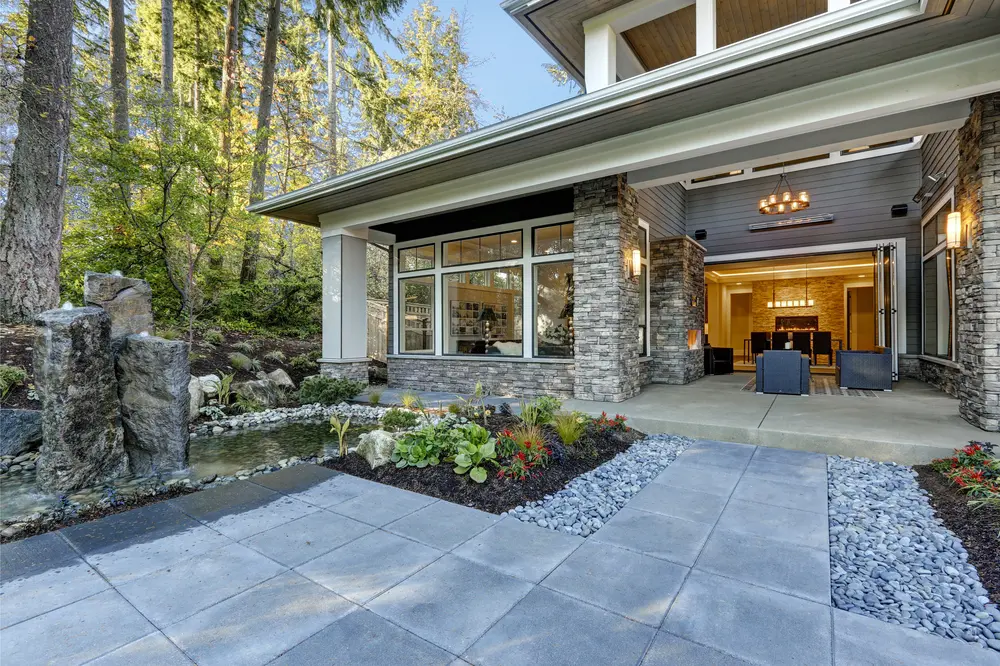
Artazum/Shutterstock
When choosing an exterior stone for your home, you should consider a few factors. Some stones weather better, and others resist staining. Some are very cost-effective, while others can get expensive.
Let’s explore each type of stone and its pros and cons.
1. Granite
Granite is one of the most common exterior stones people choose to accent their homes.
Why is it so popular?
Primarily, it’s loved for its durability. While granite is typically more expensive than other options, many homeowners consider it a worthwhile investment.
Granite has an impressive ability to withstand extreme heat, cold, weathering, and rough wear and tear.
Granite also boasts a gorgeous aesthetic appearance, featuring a grainy and natural look, and comes in several colors and shades to suit all kinds of tastes.
With all of these pros, it’s easy to see why granite is not only a popular exterior choice but an excellent one for indoor use too. Many homeowners opt for granite when deciding on countertops and backsplashes.
2. Travertine
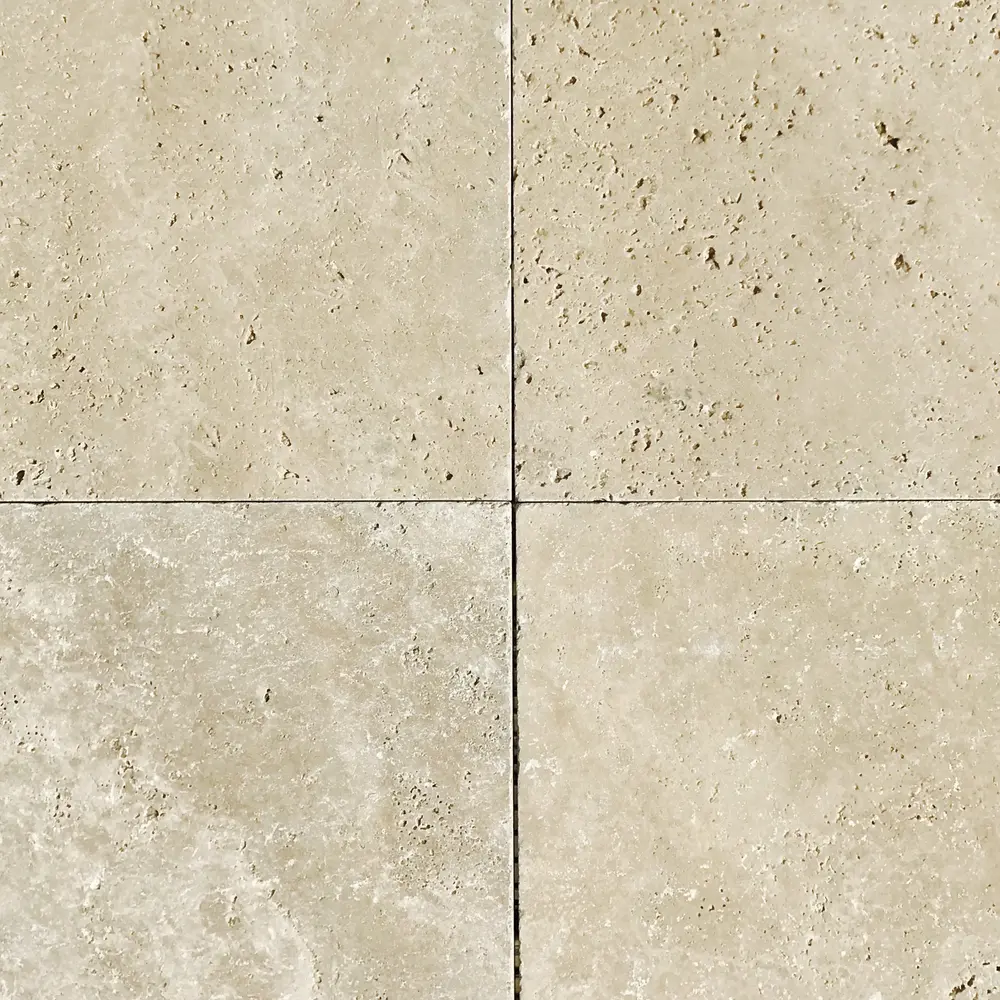
SRM Company/Shutterstock
Travertine is a popular choice for exterior and interior features. You can find travertine with natural, beautiful hints of blues, corals, oranges, creams, and more. Homeowners typically opt for travertine for its luxurious, timeless look.
It has an almost palatial look and is a popular choice not only for exteriors but also for flooring and interior walls.
Travertine stands up very well against heat and outdoor elements. However, there is one significant downside to choosing travertine: it’s known to stain somewhat easily.
3. Flint
With a nod to the Victorian Era in Europe, flint used to be a common material used to construct homes, buildings, and churches.
This sturdy option is making a comeback, appearing more and more frequently among new builds and renovations alike.
Homeowners love the rustic farmhouse charm flint provides. Flint facades are one of the most popular available on the market.
If you’re in the market for a natural stone with dark gray, blue, and black hues, flint may be your choice!
4. Limestone
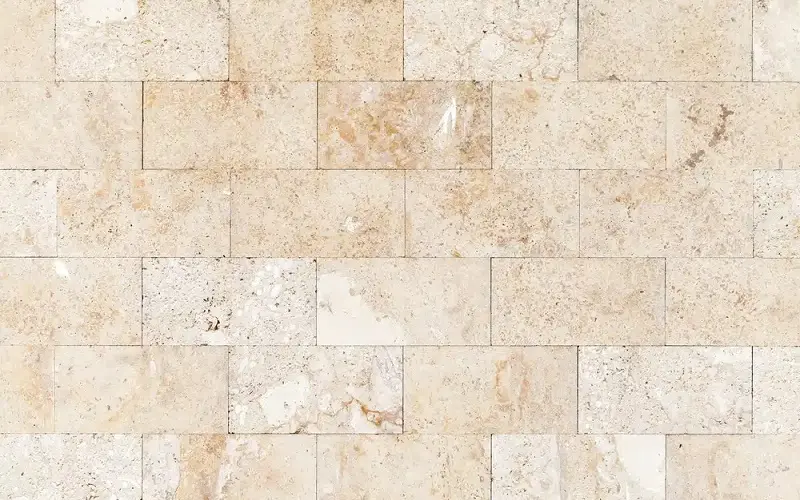
Evannovostro/Shutterstock
Limestone is an excellent option for an exterior, particularly if you’re on a budget. Due to its soft nature, limestone is easy to manipulate and forms just about any space or design you’ve got in mind.
However, just because it’s cheaper than granite or travertine doesn’t mean you’re sacrificing aesthetics. Limestone is a beautiful stone that is a popular choice, even in luxury homes.
Many homeowners opt to use limestone around exterior fireplaces because of its natural cooling ability.
That’s right; limestone has a high thermal stability element. Limestone’s biggest fallback is poor porosity. Unfortunately, it will likely become stained over time.
5. Marble
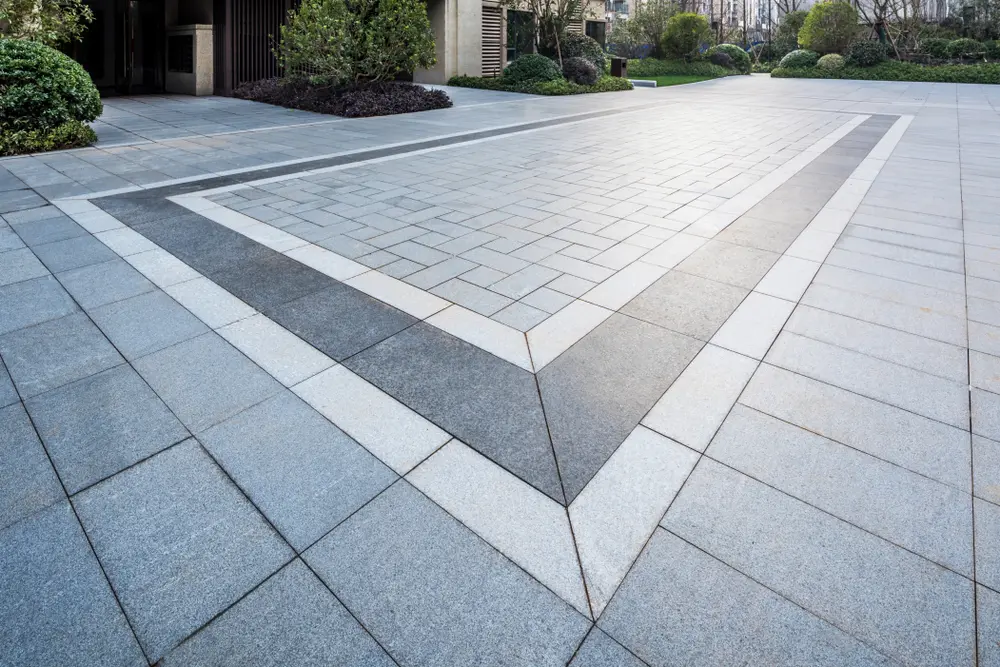
Hrui/Shutterstock
This gorgeous stone comes at a high price. It’s no wonder marble is most often used to create works of art, memorials, and statues.
It’s a beautiful stone with a smooth, light-absorbing surface that’s sure to catch your eye and keep it there.
Many luxury homes incorporate large amounts of marble on the exterior. It’s popular to use in modern or contemporary-style homes. Unfortunately, marble is susceptible to scratches and stains.
However, due to marble’s unique patterns, blemishes are usually not too noticeable. It holds up well to water and will retain its natural beauty for several years.
So why is marble so expensive? A considerable part of that cost comes from the installation. Installing marble is a specialized process requiring specific skills, knowledge, and plenty of experience.
6. Quartzite
Do you like a bit of sparkle? Check out quartzite! This lovely stone shimmers in the light due to its crystalline makeup.
Homeowners often opt for quartzite not only for its stunning looks but also because it’s nearly as durable as granite and requires little to no maintenance.
Another pro for quartzite? It’s UV-resistant, meaning it won’t fade or weaken under the sun’s rays. Quartzite comes in several natural, earthy shades.
Some common colors include browns, grays, beiges, silvers, and blues, but make no mistake—the presence of quartzite in your home will look anything but ordinary!
7. Gneiss
Often lumped together with granite, gneiss does have some notable differences and deserves its own mention. Most of these differences are easy to see with the naked eye.
Unlike granite’s characteristic speckles and flecks, gneiss has bands and waves weaving throughout its surface. Like granite, gneiss is very durable.
It’s resistant to staining and weathering and comes in a wide range of attractive colors. These hues can range from cool silvers to warm beiges and even deep blacks. Prices will put you in the same ballpark as granite.
8. Sandstone
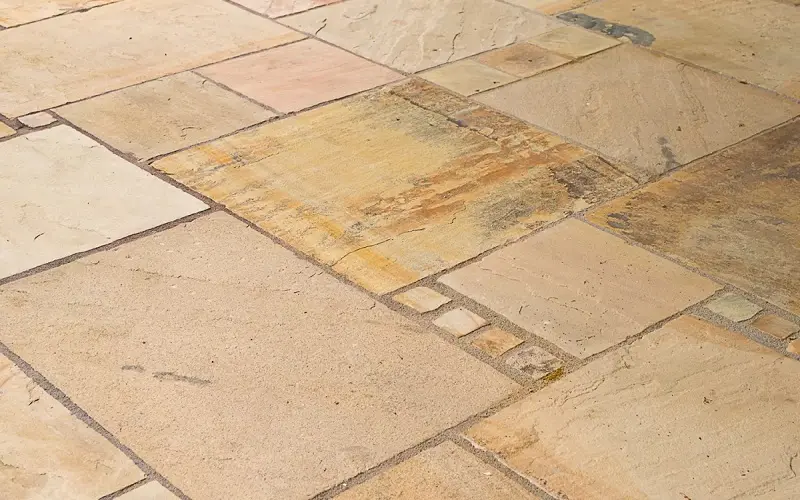
thka/Shutterstock
Another great option if you’re working with a tighter budget is sandstone, which is easily sculpted and installed. As the name suggests, sandstone is formed from sand. Just like sand glitters at the beach, your exterior will also have a subtle but beautiful shine.
Due to its durable nature and low cost, sandstone is a top-rated stone used in all kinds of ways outdoors. So, rest assured, it is an appropriate choice to stand up against the elements.
9. Steatite (Soapstone)
If you enjoy staying on top of the latest interior design trends, you’ve no doubt heard of soapstone. Designers are using it left and right for countertops and flooring, but have you ever considered soapstone for exterior housing?
You might consider it after learning that its non-porous abilities surpass even granite. That’s right, no amount of weathering, dirt, bird droppings, or plant matter will stain this gorgeous stone.
Soapstone is entirely natural and doesn’t contain added synthetic materials, making it an excellent option for environmentally conscious homeowners. Soapstone is not without flaws, however.
It comes with a hefty price tag and requires treatments and upkeep to keep it looking its best. What do these treatments look like? You or a professional will occasionally have to administer a mineral oil to your soapstone to help it age gracefully.
10. Slate
Slate’s water-resisting abilities make it a popular choice for interior and exterior features in a home.
Because it’s weather-resistant and quite a strong material, slate is a popular choice for several projects, including flooring, roofing, and other projects inside and outside the home.
Some cons to slate? It’s pretty heavy!
While it can be cut into thinner sheets, you’ll need to ensure that the exterior surface you’re applying it to is appropriately reinforced. These reinforcements can be costly projects, so be sure to factor that cost into your budget if you go with slate.
Exterior Stone Things to Consider
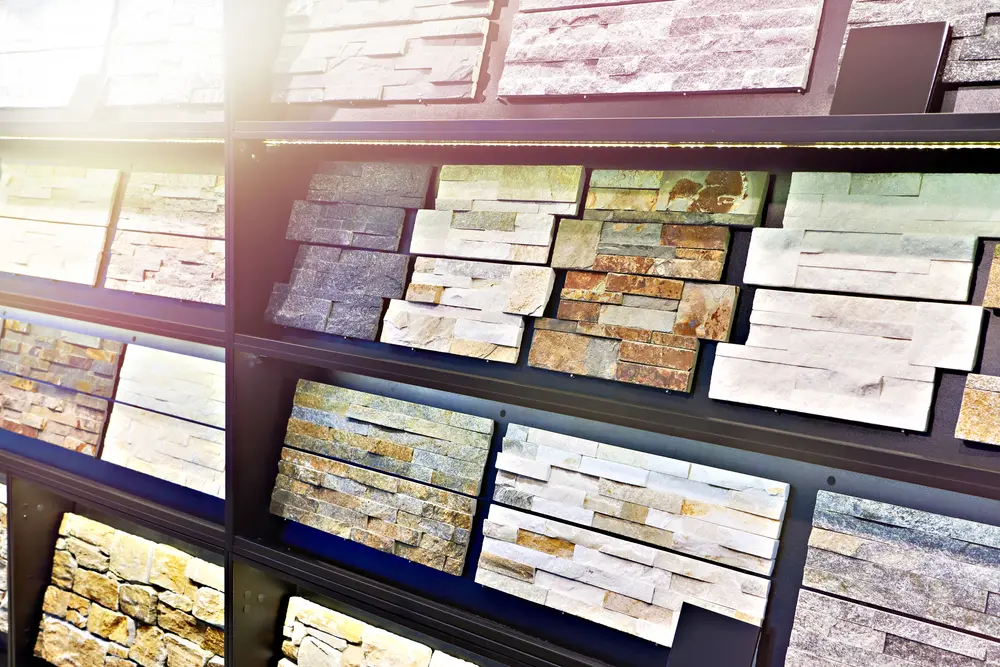
Sergey Ryzhov/Shutterstock
Here are all the big things you should consider when reviewing your options for stones suitable for exteriors.
- Cost. What does your budget look like? It’s a good idea to have a dollar amount you’re comfortable with spending before looking into all of the options.
- Various colors, hues, and patterns are available. With all of the options out there, there’s a whole rainbow of exterior stone colors to choose from!
- Ability to handle weather specific to your area. Do you live in an area prone to excessive heat? Or perhaps you have harsh, freezing winters. Factor your climate into your decision.
- Installation and labor costs. Some types of stone require specialized installation, with special care and knowledge requirements.
- Scratch and stain resistance. Will your exterior stone be in a high-traffic area and therefore more susceptible to wear?
- Availability in your area. Flint, for example, is widely popular in England but not as popular in other parts of the world. Research what stones are readily available in your area.
Frequently Asked Questions
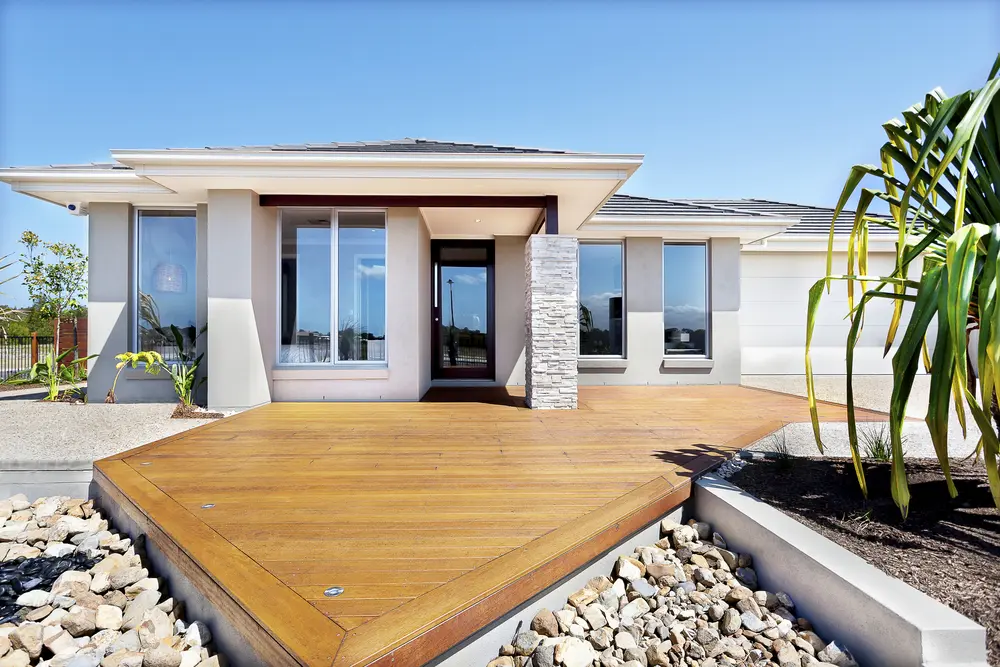
JR-Stock/Shutterstock
With so many options and each stone having so many pros and cons, it’s understandable if you feel overwhelmed. In this section, we’ll answer the top questions regarding exterior house stones.
How long does stone siding last?
Again, this depends on which stone you choose as an exterior feature. Typically natural stones will last longer than synthetic and veneer options.
Veneer options commonly tap out at 75 years, while natural stone options can last hundreds of years!
Is brick or stone cheaper?
Typically, brick is cheaper than stone. Both have a long list of pros and cons, but the stone is stronger and usually holds up better than brick.
However, both stone and brick have been used for centuries in construction and are strong, weather-resistant materials.
Which stone is best for exterior use on homes?
As previously discussed, there are several factors that go into choosing an exterior stone, so this answer will vary depending on which factors are most important to you. Carefully consider your budget, durability, and aesthetic goals.
The most common stones used on the exterior of a home are natural stones. Because they're natural, they already come equipped with strength and resilience. Among these, granite, slate, and sandstone are popular choices.
Are stone exteriors expensive?
The cost varies widely depending on which stone you select and how large the space in your home is. The average job typically falls in the $50,000-$75,000 range.
Remember, expensive stones like marble and soapstone are not only inherently pricier, but the experienced labor required will cost you more, too. Stone veneers are a cheaper option to explore as well.
What are some disadvantages of exterior house stone?
Cost is a massive factor. Stone siding can add up quickly, especially if you want to install a pricier type of stone.
Other cons include the cost of necessary reinforcements done to your home to hold up against the weight of the stone.
Depending on the stone you choose, it may also have costly and consuming upkeep. Soapstone, for example, requires regular mineral oil treatments.
So, What Type of Exterior Stone Will You Choose?
When considering all of the options for exterior stone, it can get a little overwhelming. However, because there are so many types of stones available, it’s likely there’s a stone out there that perfectly aligns with your vision.
Whether you want moody, dark soapstone or sparkly quartzite, you’re sure to find your perfect match.
After you’ve done some research and come up with a list of options, it’s always a good idea to speak to a contractor or builder near you. They will be familiar with your specific climate and the options that perform best in your area.

